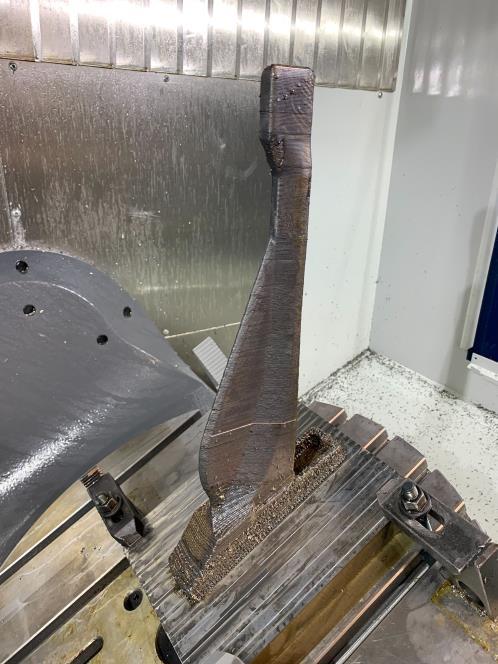Metal additive manufacturing is revolutionizing the way industries approach product design and production, offering unprecedented design flexibility, reduced lead times, and cost-efficient manufacturing.
This case study between Autodesk and Unverferth highlights how Meltio’s technology is capable of overcoming several constraints in the agricultural sector, like manufacturing low volume service parts and the redesign of components without investing in expensive tooling.
Autodesk is a global leader in design and engineering software, providing powerful tools like Autodesk Inventor and Autodesk Fusion 360 to drive innovation across industries. Unverferth Manufacturing, a prominent agricultural equipment manufacturer, continuously seeks ways to improve efficiency and performance in its production processes.

A harsh environment even for the toughest components
Injection knives are a critical wear component in agricultural equipment, responsible for cutting into the soil and injecting fertilizer or slurry. Traditionally manufactured through casting and machining, these parts face several long-standing issues:
- High wear and corrosion from soil abrasion and chemical exposure
- Difficult-to-machine features, such as narrow slots in hard-to-reach areas
- Distortion risks due to the tall geometry of the component
- Long lead times and high costs associated with tooling and casting
- Low-volume service part demand, which makes traditional methods economically unviable
With most agricultural equipment expected to operate for decades, maintaining cost-effective production for both current and legacy models presents a growing challenge.


A new injection knife to solve old problems
The component is a traditionally cast injection knife – conventionally hardened steel, which presents machining hard-to-reach slot and as it’s a tall component, it may have distortion issues
To overcome these limitations, Autodesk turned to the Meltio Engine for CNC, an integration kit for vertical machining centers that gives them hybrid manufacturing capabilities —a technology that combines laser metal deposition using wire feedstock with a traditional CNC platform.
They redesigned the component bearing in mind that thanks to Meltio’s hybrid system, several design and production limitations were no longer existing. With the new capabilities, the component could be printed even in those difficult-to-access slots. Furthermore, it was printed in 2 phases, adding material exactly where it was needed and avoiding distortions due to the fact that it was a tall component.


Advantages
- Tooling free prototyping
- Efficient low-volume production
- Improved material flexibility
- Hybrid capability
- Safer working environment
- Better ROI
Same properties, reduced costs and lead time
15 Hours Printing Time
Previously 8-10 weeks

$612.52 total cost
Previously $6000-8000

System: Meltio Engine for CNC
The Meltio Engine for CNC enables metal 3D printing and machining of complex geometries in a single process step.Sector: Agriculture
Meltio’s technology enhances the manufacturing process, delivering robust, high-precision components with improved sustainability and cost-effectiveness.Material: 316L Stainless Steel
Wire feedstock proves more affordable and safer than powder-based alternatives.Printing Time: 15 hours
It used to be 8-10 weeks.Adopting Meltio in the Agriculture sector
Prototyping new cast or forge part designs without having to invest in expensive tooling with a very short turn around time which allows our design to evolve quicker.
Low volume service parts: Most agricultural equipment has quite long lifespans which could cover decades. For those older machines that need a service part that we may only sell a few pieces a year, it’s attractive to create it with Meltio’s hybrid method. This would eliminate the need to keep, set up and maintain multiple fixtures or pieces of tooling to produce that low volume. Same for Cast/Forged parts where very low volumes are not economically viable especially with the current sourcing environment.

